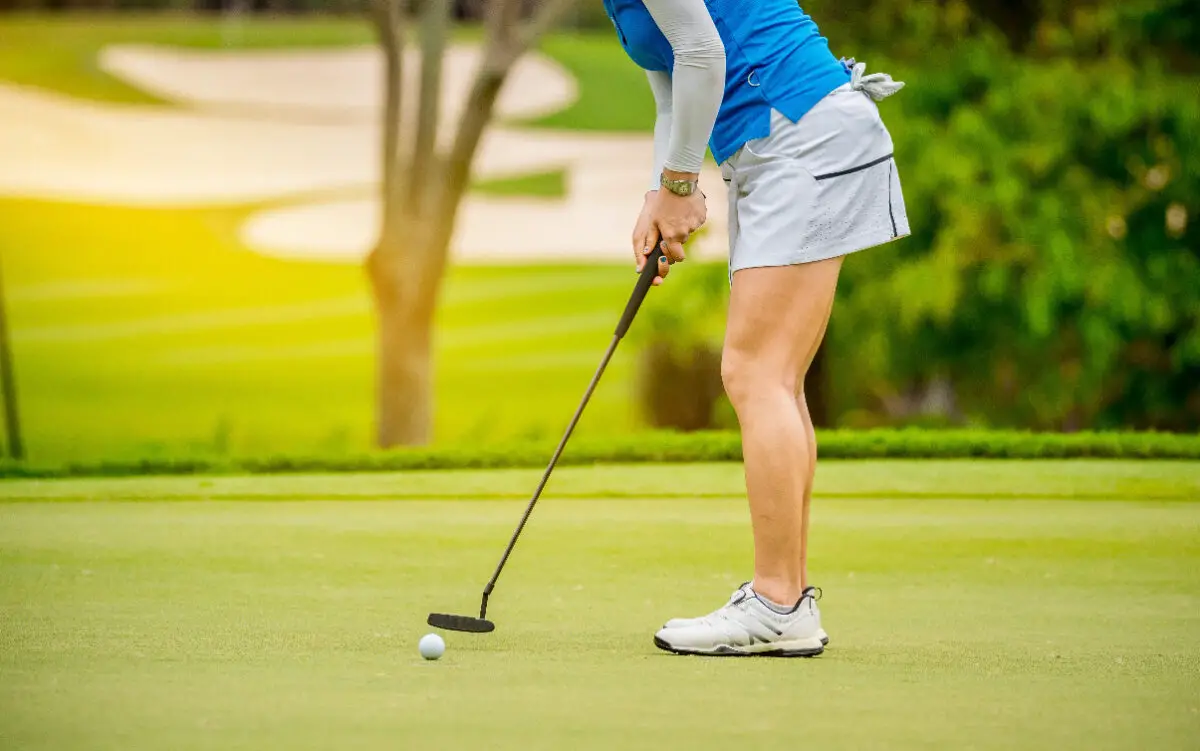How to Do a Golf Ball Fitting? The 8 Steps
Optimizing your golf ball selection to match your swing speed, angle of attack, and preference is vital for maximizing performance.
Getting professionally fit for golf balls using accurate launch monitors, swing analysis, and brand fitting experts can help determine the best ball for your game.
But if a professional fitting is not feasible, you can still do a very effective ball fitting yourself right at your course or driving range through a structured testing process. Let’s run through the key steps for DIY golf ball fitting.

Why Get Fit for Golf Balls
Before jumping into the fitting process itself, it’s helpful to understand why dialing in your golf ball matters:
- Matching construction to your swing speed optimizes distance.
- Proper compression promotes optimal launch and spin.
- Maximizing flight characteristics increases carry and total yards.
- Reducing dispersion tightens shot patterns for accuracy.
- Finding a preferable feel builds confidence and touch.
- Testing durability prevents losing balls to wear.
- Verifying visual appeal aids tracking and alignment.
Taking the time to test and find the right golf ball pays dividends for any golfer trying to shoot lower scores.
Steps for Fitting Golf Balls Yourself
Here is a step-by-step guide to DIY golf ball fitting:
Step 1: Understand Your Swing
First, analyze your swing style, ability, and preferences to set target criteria:
- Your clubhead speed with driver and typical launch angle.
- Desired feel – soft, firm, or moderate compression.
- Ideal flight – low/piercing or high/floating.
- Preference for urethane or surlyn cover.
- Typical mishits and dispersion patterns.
- Visual factors like color and alignment aids.
Step 2: Select Ball Models to Test
Next, select 6-8 balls across price ranges matching your target specs above. Include:
- 2-3 premium tour-level balls
- 2-3 quality inexpensive balls
- 1-2 mid-price balls
- Optional: 1 novelty or unconventional ball
Having a mix allows comparison across price and construction.
Step 3: Mark Balls for Tracking
Use a permanent marker to identify each ball model with letters or numbers so you can track individual results.
Step 4: Develop Testing Targets
Determine 2-3 specific swing adjustments or outcomes you want to see from the ideal ball, like:
- Increased driver carry
- More consistent flight trajectory
- Improved feel on mis-hits
- Minimized curve
- Added greenside spin
Step 5: Test Balls on the Course
Keep detailed records testing each marked ball model under real playing conditions while assessing your target factors. Take notes on:
- Driver carry distance
- Flight trajectory height and shape
- Dispersion and accuracy
- Feel on center hits and mishits
- Workability and shot shaping
- Durability after 18 holes
Step 6: Analyze and Compare Results
Compile and analyze your test data to see which balls best delivered your desired performance objectives. Rank models based on head-to-head results.
Step 7: Validate with More Testing
Re-test the top 2-3 balls from the initial ranking using fresh samples to validate your findings over another round or range session.
Step 8: Determine the Best Overall Fit
With validation complete, determine your top overall choice based on the complete body of testing and your specific needs. Refine with more testing as desired.

Additional Tips for DIY Fitting
To maximize the effectiveness of your DIY golf ball fitting, keep these additional tips in mind:
- Test in varied real course conditions when possible.
- Wash balls between rounds to eliminate cover wear effects.
- Ask fellow players to also test a couple of balls and compare notes.
- The film swings with each ball and examines impact and launch differences.
- Try hitting balls your fitter recommends that you normally wouldn’t to prevent biases.
- Re-test annually as new models are released onto the market.
- Buy 2 dozen of your winning ball so you have plenty in play.
Putting in the time to properly test and analyze will ensure you uncover the best golf balls for your game.
When to Seek Professional Fitting
While thorough DIY fitting lets you zero in on an ideal golf ball, professional fittings offer benefits like:
- Monitor and measure precise launch conditions like spin rate.
- Expert analysis of your swing and playing data.
- Ability to test proprietary pre-release ball models.
- Fitting at performance institutes equipped with advanced analytics.
- Unbiased recommendations are not tied to certain brands.
So for comprehensive quantification of data, specialized expertise, and access to every ball, professional fitting services can take it to the next level.
Trust But Verify Fitted Balls
Whichever route you take, it’s vital to validate and verify proper fit through rigorous testing over several rounds. Detailed notes refine the process.
It’s common to need further adjustments even after a pro fitting. Pay attention to real-world results and dial in your ball with additional tweaks until you maximize performance.
Finding Your Winning Golf Ball
Great golf begins with matching the proper equipment to your abilities. By taking time to test and find the ideal golf ball, you gain an advantage that cuts strokes off your score.
While tour pros have extensive resources, a savvy amateur willing to work through a structured DIY fitting and verification process can also uncover their winning golf ball. Let your clubs do the talking and shoot lower scores with the perfectly fit ball for your game.
